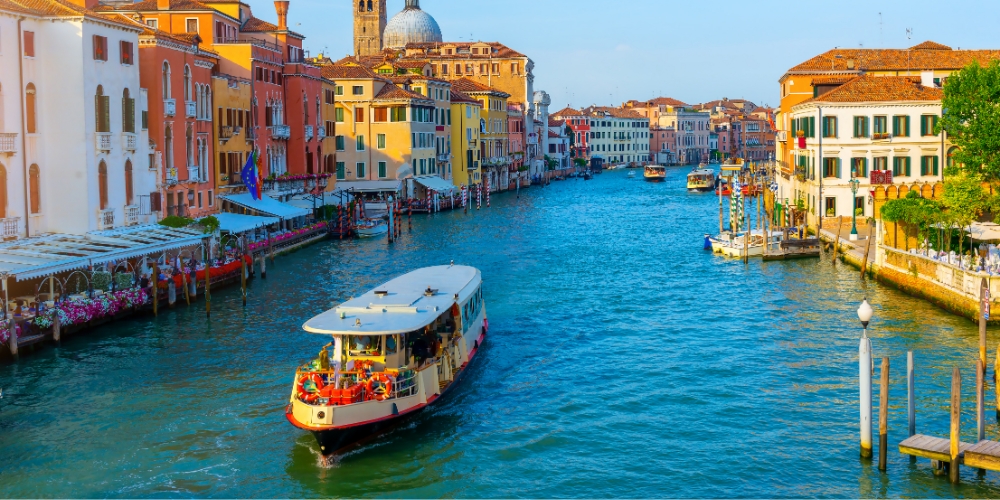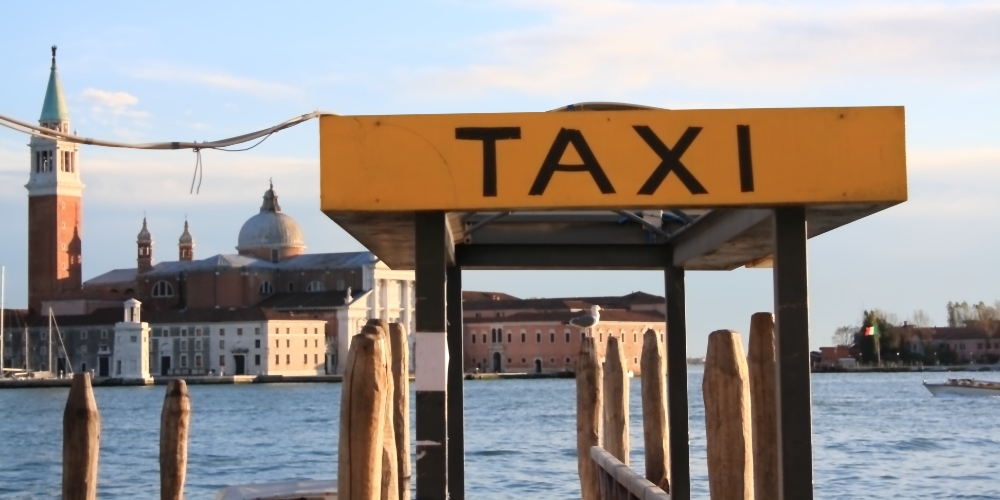AMV, ACTV, ATVO and VELA take care of the transport network of the Municipality of Venice.
How to get around in Venice

In addition to the iconic gondolas, in Venice historic centre one can get around on foot or by vaporetto (water bus). Vaporettos, motorboats and motorships are the public means of transport in Venice.
In Venice, therefore, you can get around on foot, or on the waterways by choosing one of the 159 boats (vaporettos, motoscafi, foranei boats, motorships or ferries) available from the Actv fleet. Actv public transport guarantees mobility on almost the entire territory.
The navigation network serves the historic center of Venice connecting it to the islands of the lagoon up to Treporti and Punta Sabbioni to the north, and up to Chioggia to the south.
Vaporettos in Venice

The vaporettos in Venice are divided into three lines:
- City Centre lines (lines 1 and 2), which cross the city sailing along the Grand Canal and Giudecca Canal. They leave from Tronchetto or Piazzale Roma and go as far as Lido di Venezia;
- Gira Città lines (lines 3, 4.1, 4.2, 5.1, 5.2, 6), which run as far as Murano and Lido di Venezia;
- Linee Lagunari (lines 12, 13, 14, 19), connecting the outermost parts of the lagoon archipelago. They go as far as the mainland, Marco Polo Airport in Tessera, Treporti, Punta Sabbioni, Chioggia, Fusina and S. Giuliano.
From Tronchetto you find ferry boats to Lido di Venezia, Punta Sabbioni – Cavallino and Pellestrina.
Land transport: Venice bus network

Venice also has an automobile network. In the mainland there are four different urban bus networks that serve:
Venice taxi and water taxi services

Venice also has two lines of taxis and one service of water taxi.
These is the main contact:
Radio Taxi (Water Taxi)
+39 041 5964 www.radiotaxivenezia.com










Lascia un commento